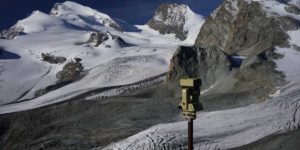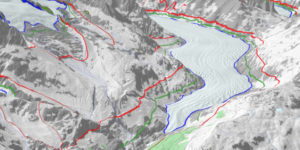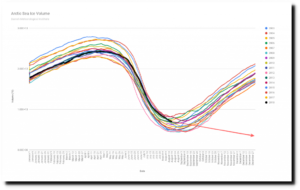by K. Richard, August 20, 2018 in NoTricksZone
Archives quotidiennes :
Direct evidence of surface exposed water ice in the lunar polar regions
by Shaui Li et al., August 20, 2018 PNAS
We found direct and definitive evidence for surface-exposed water ice in the lunar polar regions. The abundance and distribution of ice on the Moon are distinct from those on other airless bodies in the inner solar system such as Mercury and Ceres, which may be associated with the unique formation and evolution process of our Moon. These ice deposits might be utilized as an in situ resource in future exploration of the Moon.
…
Integrated genomic and fossil evidence illuminates life’s early evolution and eukaryote origin
by Holly C. Betts et al., August 20, 2018 in NatureEcology&Evolution
We derive a timescale of life, combining a reappraisal of the fossil material with new molecular clock analyses. We find the last universal common ancestor of cellular life to have predated the end of late heavy bombardment (>3.9 billion years ago (Ga)). The crown clades of the two primary divisions of life, Eubacteria and Archaebacteria, emerged much later (<3.4 Ga), relegating the oldest fossil evidence for life to their stem lineages. The Great Oxidation Event significantly predates the origin of modern Cyanobacteria, indicating that oxygenic photosynthesis evolved within the cyanobacterial stem lineage. Modern eukaryotes do not constitute a primary lineage of life and emerged late in Earth’s history (<1.84 Ga), falsifying the hypothesis that the Great Oxidation Event facilitated their radiation…
Observing glaciers in “real time”
by Anthony Watts, August 20, 2018 in WUWT
From ETH Zurich and the “slow as molasses in winter” department.
Hot summers cause glaciers to melt. That not only changes the makeup of the landscape and hence the maps of Switzerland, it also affects every area of society. A new, dynamic glacier inventory makes the impact of climate change and the changing landscape visible.
The last time Swiss glaciers managed to grow at all was in 2001. Since then, the country’s 1,500 glaciers – as well as others elsewhere – have been suffering a slow but inexorable death. Until now, though, we have understood only partially how quickly they are really disappearing, and what effect that has on the landscape, people and animals. That is about to change, thanks to the Glacier Monitoring in Switzerland (GLAMOS) project. GLAMOS is working on behalf of various Swiss federal offices to put together a comprehensive inventory of the country’s glaciers – at an unprecedented level of detail.

Glacier observation under the spell of several Valais four-thousand-metre peaks. (Photograph: GLAMOS)

America Had Lower CO2 Emissions Than Paris Climate Accord Signatories
by Stephen Moore, August 20, 2018 in ClimateChangeDispatch
Take a wild guess what country is reducing its greenhouse gas emissions the most? Canada? Britain? France? India? Germany? Japan? No, no, no, no, no and no.
The answer to that question is the United States of America. Wow! How can that be? This must be a misprint. Fake news. America never signed the Kyoto Protocol some two decades ago.
…
New Ice-Free Arctic Forecast
by Tony Heller, August 20, 2018 in TheDeporableClimateScienceBolg
Arctic sea ice melt dropped to its lowest level since May 12 yesterday, and now the Arctic won’t be ice-free until July 20 of next year, 12:01 am.
…

